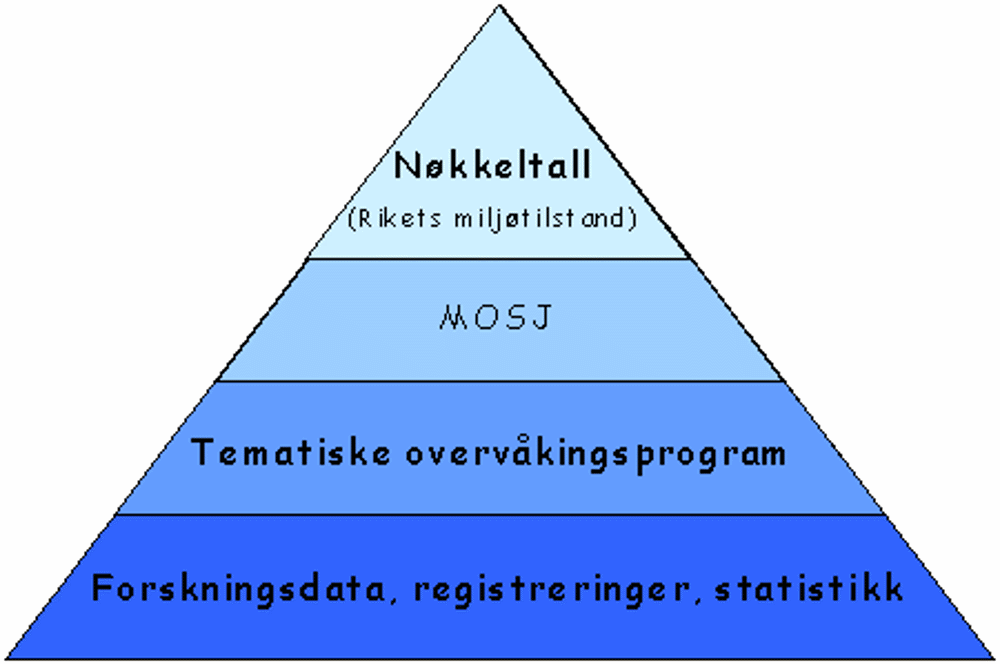The program collects and processes data on the environmental impact and the state of nature, wildlife and cultural heritage in the area.
The program's mission is also to interpret the data to describe the development of the environment on Svalbard and Jan Mayen, and to advise the administration on the need for action, research or improved monitoring of the areas.
MOSJ is a part of government environmental monitoring in Norway. One important function is to provide a basis to see if we achieve the political goals set for environmental development in the north. A selection of the most important indicators from the MOSJ monitoring will be presented as key figures in white papers on "The Government's environmental policy and the environmental state of the realm."
MOSJ focuses on information that is strategically important for politicians and administration. However, to understand what is happening to the environment in the long term there are also thematic monitoring programs. Examples of these are monitoring of air pollution in Ny-Ålesund, monitoring of catches and stocks of commercial fish species and monitoring of temperature and precipitation at the meteorological stations.
Important research
Good environmental monitoring must be based on research. Research can tell us what is most relevant to monitor, for example when we want to find the animal or bird species that provide a typical picture of an ecosystem. Research is also needed to determine how monitoring should be done. Finally, we need research to interpret and explain the data collected through monitoring. These are important reasons why research must be integrated closely with monitoring programmes.

Figure 1 MOSJ in comparison to other monitoring and research. The width of the triangle indicates how broadly one gathers in various activities that collect data. The top levels must be based on those located further down, so that e.g. monitoring is supported by research.
Main topics and indicators
The content of MOSJ is organized by the main topics:
- Climate
- Influencing factors
- Fauna
- Flora
- Cultural heritage
MOSJ consists of a number of indicators that in turn have one or more parameters. An indicator is data that provides concentrated information about a topic. Environmental indicators should include information on what is typical or critical for environmental quality. Then presentations using figures, maps or figures can provide a simplified image of the most important aspects of a more complex reality.
An indicator may consist of one or more parameters. A parameter is what is actually recorded, measured or calculated.
Interpretations of datasets
MOSJ not only wants to present data, but will also provide interpretations that explain the data.
In principle we ask three three questions:
- Is there a trend in the development or not, and if so, what is this trend?
- What are the causes of the trend?
- What consequences will it have?
The interpretations are presented for each indicator based on an assessment of the individual parameters. The interpretations are both under each indicator and in an overall document summary.
Interpreted indicators are independent products for utilizing MOSJ, among other things in the administration's ongoing work and for others who want to use MOSJ as a source of knowledge. They are also the building blocks for the evaluation of the environmental condition at a higher level. Emphasis is on comparing data in MOSJ with all other relevant information, as the MOSJ data alone cannot explain all of the trends.
Participants in the programme
The data presented in MOSJ comes from numerous providers that carry out monitoring. The major data providers are: The Governor of Svalbard, the Institute of Marine Research, the Norwegian Institute for Air Research (NILU), the Norwegian Meteorological Institute (MI), the Norwegian Institute for Nature Research (NINA) and the Norwegian Polar Institute.
The interpretation of the individual topics is performed by an interpretation group in collaboration with the environmental consultants and research managers at the Norwegian Polar Institute.
